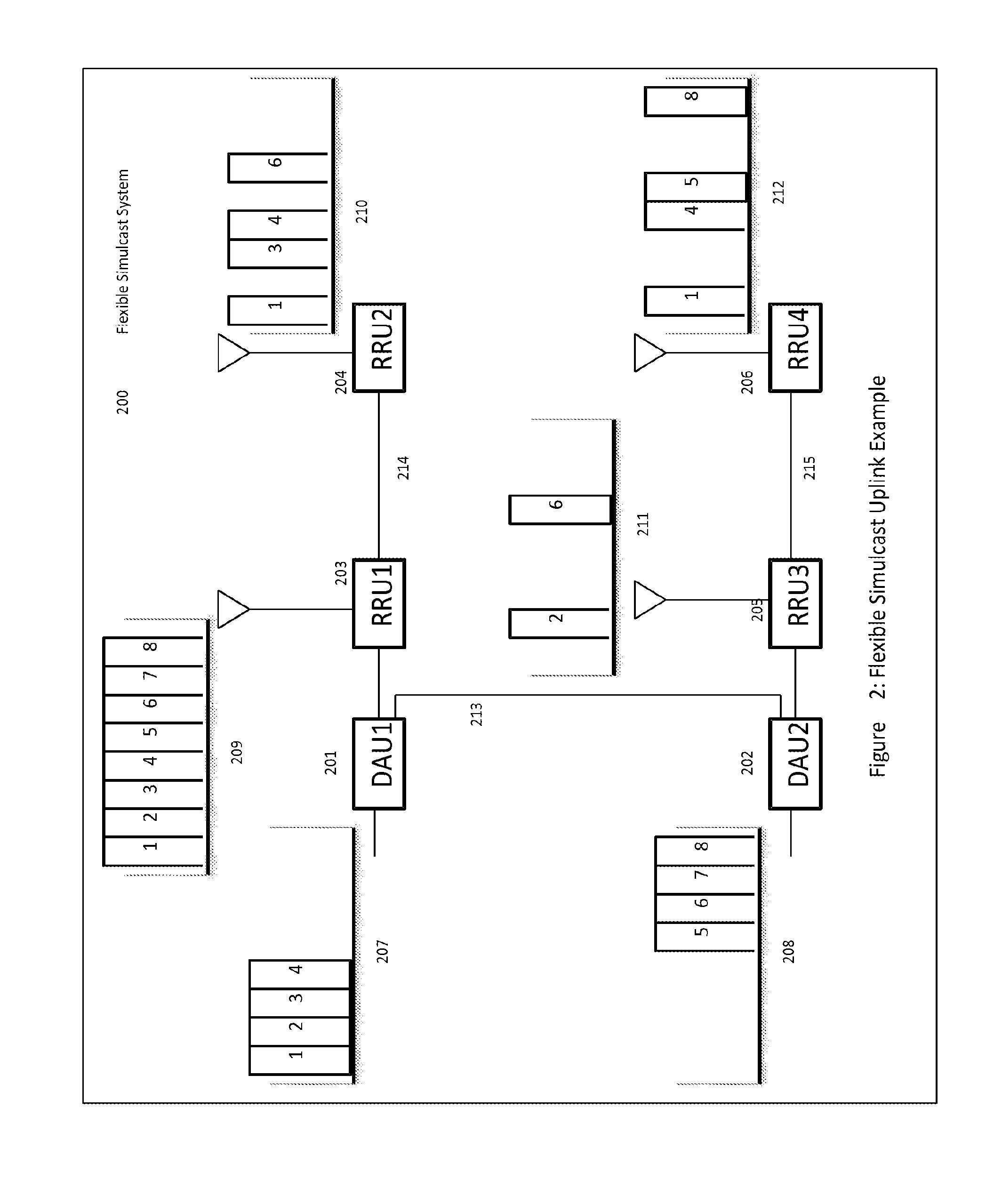Remotely reconfigureable distributed antenna system and methods
a distributed antenna and remote reconfiguration technology, applied in the field of wireless communication systems, can solve the problems of wasting many base stations' capacity, presenting unexpected challenges with regard to available wireless capacity and data throughput, and the most difficult challenges faced by network operators, and achieves the effects of enhancing the efficiency and traffic capacity of the operators' wireless networks, facilitating the use of radio resource efficiency, and facilitating the utilization of radio resource efficiency
- Summary
- Abstract
- Description
- Claims
- Application Information
AI Technical Summary
Benefits of technology
Problems solved by technology
Method used
Image
Examples
Embodiment Construction
[0030]The present invention is a novel Reconfigurable Distributed Antenna System that provides a high degree of flexibility to manage, control, re-configure, enhance and facilitate the radio resource efficiency, usage and overall performance of the distributed wireless network. An embodiment of the Reconfigurable Distributed Antenna System in accordance with the present invention is shown in FIG. 1. The Flexible Simulcast System 100 can be used to explain the operation of Flexible Simulcast with regard to downlink signals. The system employs a Digital Access Unit functionality (hereinafter “DAU”). The DAU serves as an interface to the base station (BTS). The DAU is (at one end) connected to the BTS, and on the other side connected to multiple RRUs. For the downlink (DL) path, RF signals received from the BTS are separately down-converted, digitized, and converted to baseband (using a Digital Down-Converter). Data streams are then I / Q mapped and framed. Specific parallel data streams...
PUM
 Login to View More
Login to View More Abstract
Description
Claims
Application Information
 Login to View More
Login to View More - R&D
- Intellectual Property
- Life Sciences
- Materials
- Tech Scout
- Unparalleled Data Quality
- Higher Quality Content
- 60% Fewer Hallucinations
Browse by: Latest US Patents, China's latest patents, Technical Efficacy Thesaurus, Application Domain, Technology Topic, Popular Technical Reports.
© 2025 PatSnap. All rights reserved.Legal|Privacy policy|Modern Slavery Act Transparency Statement|Sitemap|About US| Contact US: help@patsnap.com



